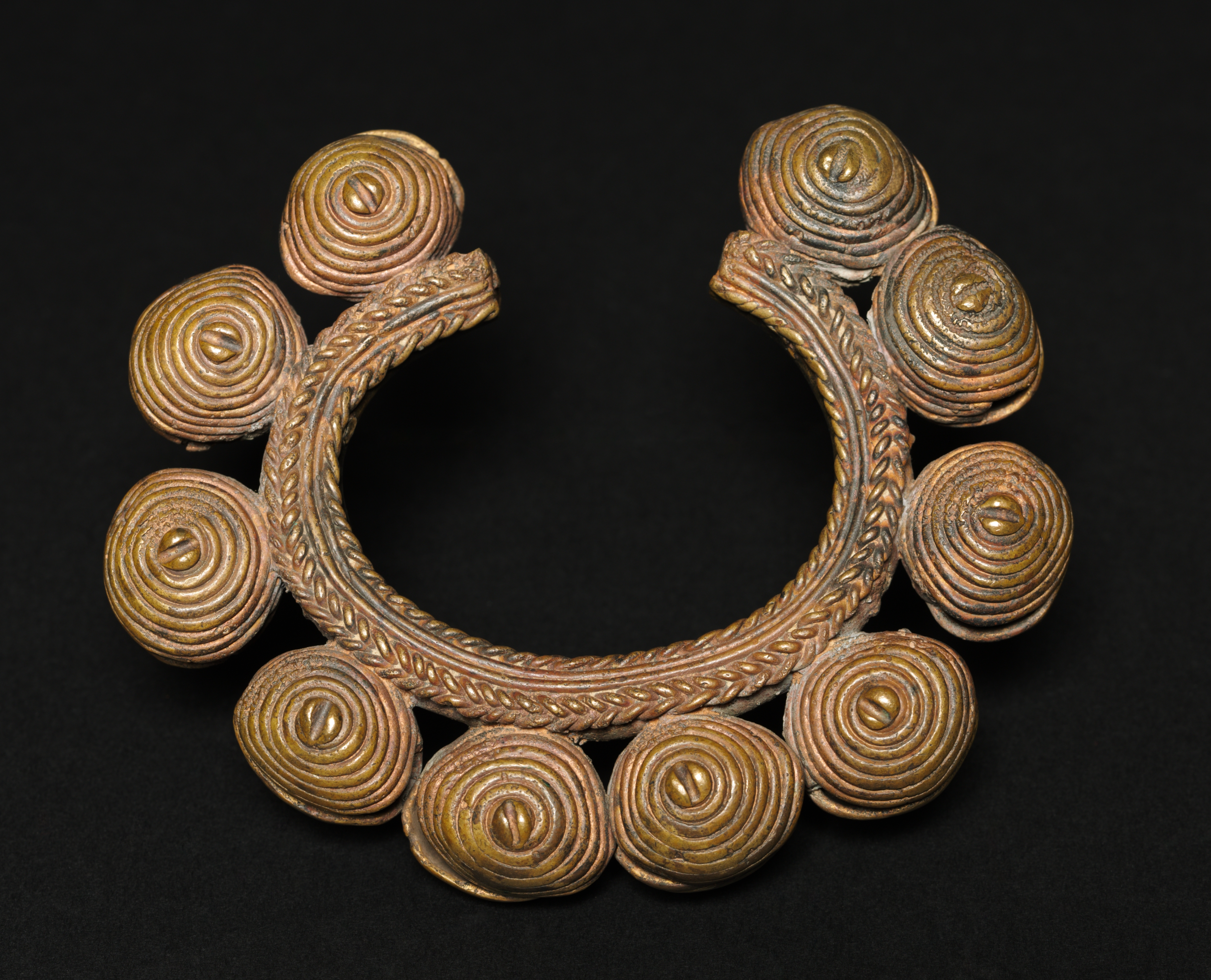The Cleveland Museum of Art
Collection Online as of April 19, 2024

Bracelet
before 1927
Overall: 16 x 14.2 cm (6 5/16 x 5 9/16 in.)
Location: 108A Sub-Saharan
Did You Know?
From 1822 to 1847, the American Colonization Society colonized what became Liberia. Americo-Liberians (Congau) ruled until 1980. However, blacksmiths generally sourced brass for jewelry making from kettles or bullets brought by nearby French colonials from the 1890s onwards.Description
This bracelet was created by the "lost-wax" (cire-perdue) technique---first modelled in wax, next covered with clay, then heated to melt or "lose" the wax, which was replaced by molten brass. Several such anklets were attached at the time of a woman's marriage and only removed after her death. Their weight and decorative richness expressed her husband's wealth and prestige as well as her own favored status, for such a woman was expected to live a life of some leisure while other wives and retainers did farming and domestic chores. The spheres around the perimeter--bells--added beautiful sounds to an impressive sight.- 1927/28Collected by Willett Rankin Wilson in Liberia, 1927/281982–The Cleveland Museum of Art, Cleveland, OH1927/28–1982Willett Rankin Wilson, Lyndhurst, OH, given to the Cleveland Museum of ArtProvenance Footnotes1 Memorandum from Virginia Crawford to Dr. Lee, 12-8-82, curatorial file2 The Bulletin of the Cleveland Museum of Art, 1984, p. 763 Memorandum from Virginia Crawford to Dr. Lee, 12-8-82, curatorial file
- Arts of Africa: Gallery Rotation (African art rotation). The Cleveland Museum of Art (organizer) (December 10, 2021-July 2, 2023).
- {{cite web|title=Bracelet|url=false|author=|year=before 1927|access-date=19 April 2024|publisher=Cleveland Museum of Art}}
Source URL:
https://www.clevelandart.org/art/1982.341.1